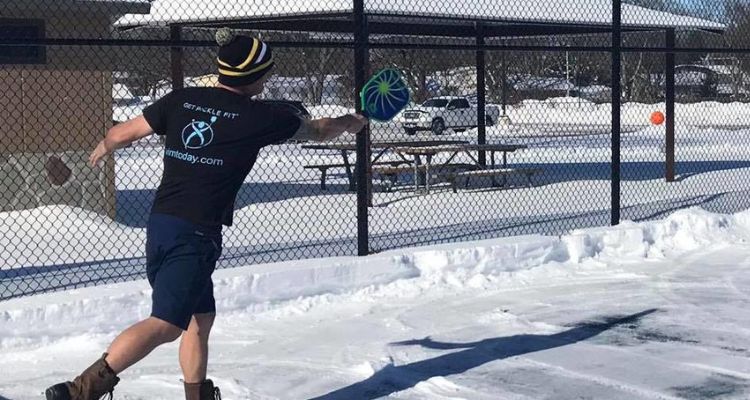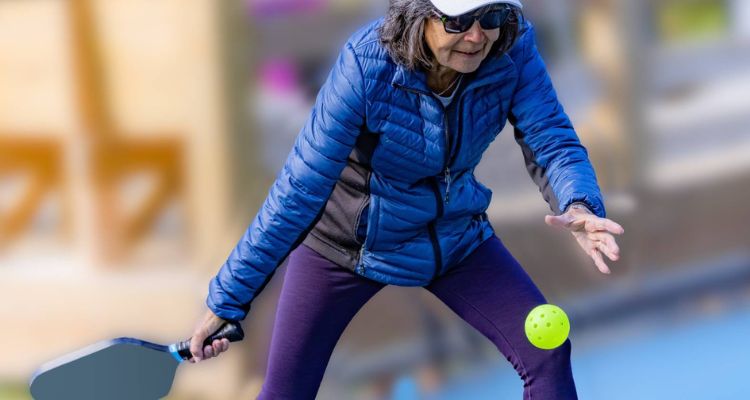Are you a die-hard pickleball player who can’t imagine a day without your favorite game? Well, fret not! We’re here to explore whether you can still play pickleball in colder weather. So grab a warm cup of cocoa and let’s find out!
Can You Play Pickleball in Cold Weather?
The short answer is yes, you can play pickleball in cold weather. However, it may not be as enjoyable or comfortable as playing in warmer temperatures. The cold air makes the ball heavier and slower, making it harder to hit accurately without getting tired quickly. Additionally, colder temperatures make paddle handles slick and less grippy, leading to more dropped shots due to slipping hands. And let’s not forget about the windy conditions that can dramatically affect the trajectory of your shots. It can be quite challenging to control them, resulting in errors on your behalf.

But hey, if you’re determined enough, nothing stops you from playing pickleball outdoors during cold weather months! Just make sure to dress appropriately with several layers of clothing to avoid getting too cold while waiting for your turn at bat. You might also want to consider using gloves for extra warmth and grip support when swinging your paddle. We wouldn’t want that ball slipping out of your hand mid-swing!
What Temperature Is Too Cold to Play Pickleball?
Taking precautions when playing pickleball in cold temperatures is crucial to avoid discomfort and injury. As a general rule, a temperature of 40°F (4°C) or lower is considered too cold to play pickleball safely and comfortably. Below this temperature range, you risk hypothermia and frostbite if exposed for too long without proper clothing protection. So, to ensure your safety during winter, it’s best to switch to indoor play or wait until the weather warms up before heading outside again.
Does Cold Weather Affect Pickleball Paddles?
Yes, cold weather can significantly impact pickleball paddles when playing outdoors. The structure and performance of a paddle’s handle and head can be affected by cold temperatures. Various materials, such as wood, graphite, and composites, are used for pickleball paddle handles. However, these materials can become brittle in cold temperatures, leading to cracks or breaks.
The head of the paddle can also become more rigid in colder climates, making its surface less responsive and resulting in an inconsistent hit. If players store their paddles outdoors, they must ensure they are well-protected from moisture and extreme temperature changes. These factors could cause warping or other damage to the paddle’s surface over time. Storing your pickleball paddle at room temperature when not in use during cold weather conditions is essential to ensure optimal play.
Can Pickleball Balls Handle Cold Weather?
Now, onto the big question: can pickleball balls handle cold weather? The answer is yes! Pickleball balls are designed to withstand the cold and maintain their bounce and playability.

However, it’s important to note that freezing temperatures can make the ball rubber brittle over time and potentially affect its performance. Best practice is to store your pickleball balls in a cool, dry place when not in use. Additionally, it’s a good idea to warm up your pickleballs before playing by holding them close or hitting them against another surface multiple times. This ensures they don’t feel overly rigid during play.
FAQs:
Is it hard to play pickleball in the wind?
Yes, playing pickleball in the wind can be difficult because it affects the ball’s trajectory and makes it harder to control.
Can I play pickleball in my basement?
No, playing pickleball in a basement is not recommended due to the potential of hitting objects or people. Pickleball courts should have a hard flat surface and enough space for players and spectators.
What is the hardest part of pickleball?
The hardest part of pickleball is mastering the technique and strategy involved in the game. It requires good timing, footwork, and shot selection. Additionally, effective communication with your partner is vital in doubles play.
Conclusion
In conclusion, playing pickleball in cold weather is possible with the proper clothing and equipment. It may require a few extra layers of clothing and some adjustments, but it can still be an enjoyable experience. So, if you’re up for the challenge, don’t let the cold weather stop you from enjoying your favorite outdoor activity during winter!




